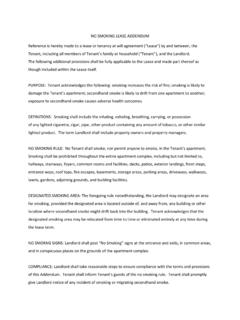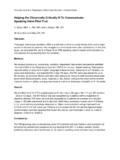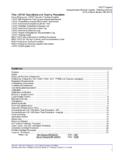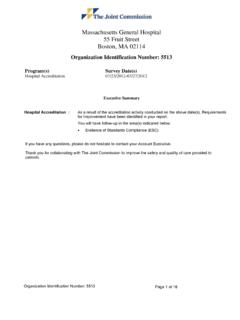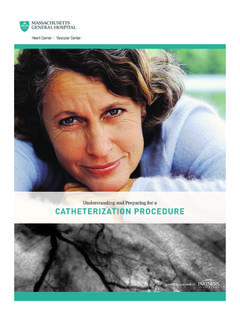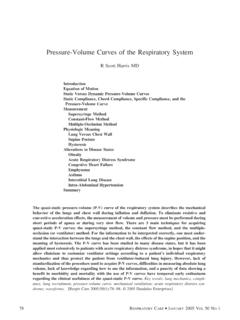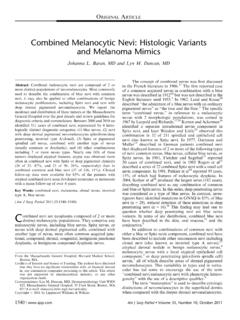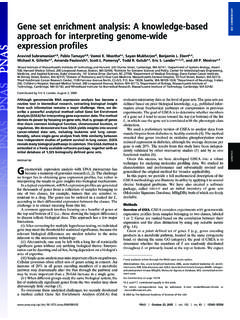Transcription of Sugar-Sweetened Beverages, Obesity, and Chronic Disease ...
1 Sugar-Sweetened Beverages, obesity , and Chronic Disease Fact Sheet What are Sugar-Sweetened Beverages? Sugar-Sweetened beverages (SSBs) include any beverage to which a caloric sweetener (any type of sugar ) has been added. These beverages include: soda, other carbonated soft drinks, juice drinks, sports drinks, energy drinks, sweetened milk or milk alternatives, and sweetened tea or coffee drinks. Most Sugar-Sweetened beverages add calories without providing any nutritional benefit. A typical 20-ounce soda contains about 16 teaspoons of sugar and 250 calories. To burn off these calories, the average adult would have to walk at a brisk pace for 45 minutes.
2 How much sugar do we drink? Americans eat about 20 teaspoons of sugar (320 calories) a day according to a report from the 2005 . 10 NHANES (National Health and Nutrition Examination Survey) database. However the American Heart Association recommends that the maximum daily intake of added sugars be 100 calories (6. teaspoons) for women, and for men it's 150 calories (9 teaspoons). Teens and men consume the most added sugars. Average daily consumption for men: 335 calories, boys: 362 calories; girls: 282. Calories; women: 230 calories. 1. Studies suggest that drinking too many calories is even more likely to cause weight gain than eating too many calories from solid foods, because liquid calories are not as satisfying as calories consumed from solid foods.
3 Fluids do not contribute to a feeling of fullness, so people tend to consume more fluid calories to compensate. Reducing liquid calorie intake has a stronger effect on weight loss than reducing solid calories. 2,3. People should carefully monitor the calories they drink and get enough water to maintain proper hydration every day. A diet rich in fruits, vegetables, whole grains, lean protein and low-fat dairy products provides sufficient daily calories. Added sugar is not necessary for health. What is the health impact of SSB consumption? American Heart Association Study Highlights: o Sugar-Sweetened beverages may be linked to about 180,000 deaths in the world each year.
4 O Countries in the Caribbean/Latin America had among the highest death rates from diabetes due to consumption of sugary beverages. o About 25,000 deaths in the United States each year may be associated with sugar - sweetened drinks. 4. Numerous studies indicate that higher intake of SSBs leads to an increased risk of gaining weight10 and also of developing type 2 diabetes, heart Disease , metabolic syndrome, hypertension, and gout 5,6,7,8,9,10. Several large meta-analyses have found that SSB intake was significantly associated with weight gain and obesity . 11,12,13 Studies funded by the food industry have reported significantly smaller health impact of SSB consumption than non-industry-funded studies.
5 Numerous research studies demonstrate that sugary drinks harm young people's health: Sugary drinks contribute 22% of empty calories consumed by young people 14. Soda is the #1 source of calories in teens' diets 15. Children consumed 20% more calories from sugary drinks in 1999-2004 than they did 10. years earlier 16. Drinking just one 8-oz sugary drink per day increases a child's odds of becoming obese by 60% 17. Companies spend more to market sugary drinks to children and adolescents than any other food category 18. Exposure to sugary drink ads is associated with higher overall sugary drink consumption among children 19.
6 beverage companies openly target teens with their marketing programs. 20. beverage companies have indicated that they view Hispanics and blacks as a source of future growth for their sugary drink products. 21. How much of a problem is obesity in Boston and the US? In 2010, 56% of Boston adults were obese (21%) or overweight (35%). 22. Black residents (32%) and Latino residents (26%) in Boston experience nearly double the obesity prevalence of White residents (16%). 23 Communities of color are exposed to more advertising of obesity -promoting activities and food, including Sugar-Sweetened beverages.
7 24. of Boston Public School students are overweight or obese. 25. In the past thirty years, US obesity prevalence has doubled among adults 26 and tripled among children. 27 While these rates have leveled off in recent years, they have not yet started to decline. 28. What is the impact of type-2 diabetes in Boston and the US? The increase in type-2 diabetes, a Disease where the body cannot properly regulate blood sugar , is closely connected to the obesity epidemic. Type-2 diabetes can be dangerous if undetected or poorly controlled, leading to blindness, kidney failure, lower limb amputation, heart attack, stroke, impotence, and premature death.
8 In 2010, six percent of Boston adults reported having diabetes. 29. In 2008, 13% of obese Boston adults reported having diabetes, compared to just 2% of normal or underweight adults. 30. Like many diseases, diabetes especially affects people of color. The 2008 diabetes-related death rate for Black residents was nearly three times the rate for White residents, while the rate for Latino residents was more than twice the rate for White residents. 31 More than 90% of these deaths are preventable, and reduction of SSB's is one of the important steps to take. How does the obesity epidemic affect everyone?
9 Annual medical costs for an obese patient are more than $1400 higher than for a patient at a healthy weight. In 2008, estimated obesity -related health care costs were $147 billion, more than 9% of all medical costs. About half of these costs were paid through public expenditures. 32 If the prevalence of obesity and overweight increase further, costs could double every decade, potentially accounting for 16-18% of all health care costs. 33. What are strategies to reduce Sugar-Sweetened beverage consumption? A policy change in Boston Public Schools that restricted the sale of Sugar-Sweetened beverages resulted in significant reductions in the consumption of these beverages.
10 34. Two studies in Boston hospital cafeterias have demonstrated that pricing, education, and/or labeling strategies lead to decreased purchases of Sugar-Sweetened beverages. 35, 36. The REACH obesity and Hypertension Demonstration Project's Healthy beverage Initiative encourages organizations and workplaces to adopt healthy beverage procurement/sales strategies. Partnerships include: 9 Boston-based hospitals and community health centers 19 Supermarkets 6 Youth Organizations 37 Out-of-school Time Programs 2 Homeless Service Providers Over 70 Early Child Care Programs 11 Community and Faith-based Organizations 10 YMCA of Greater Boston sites Revised June 2014.
